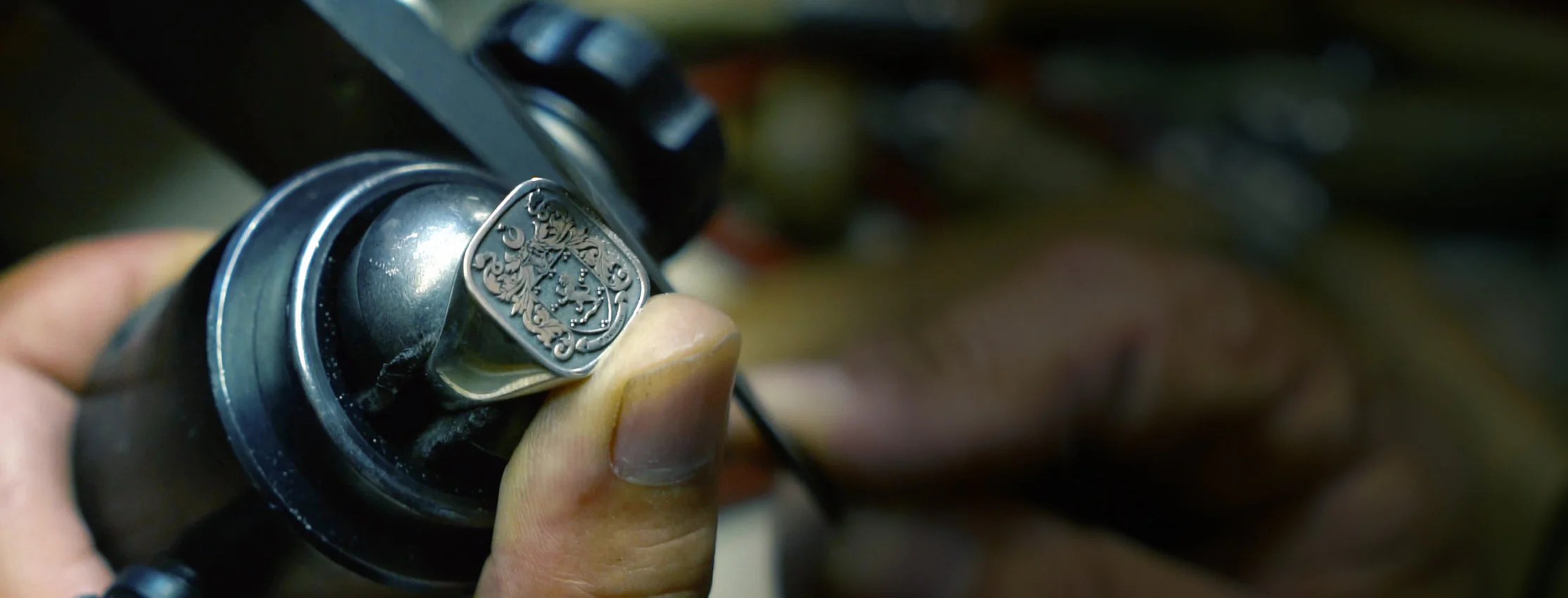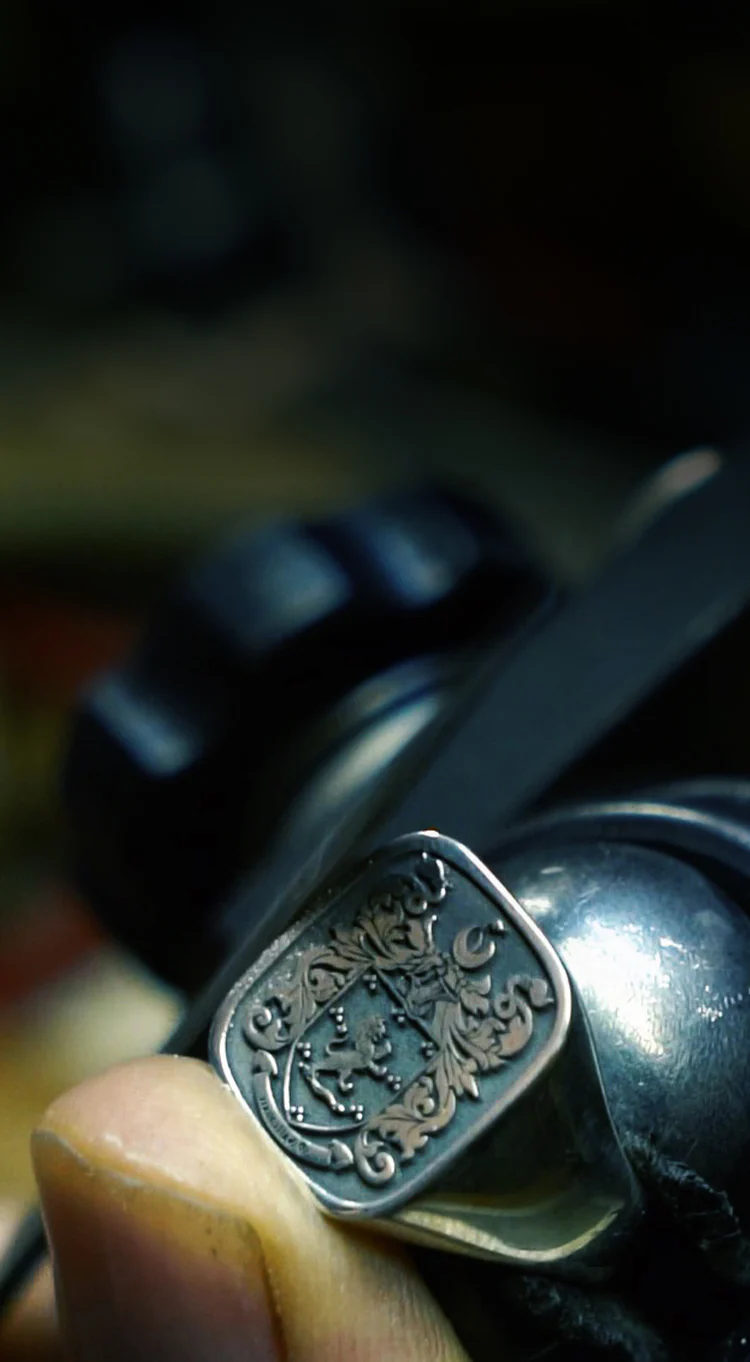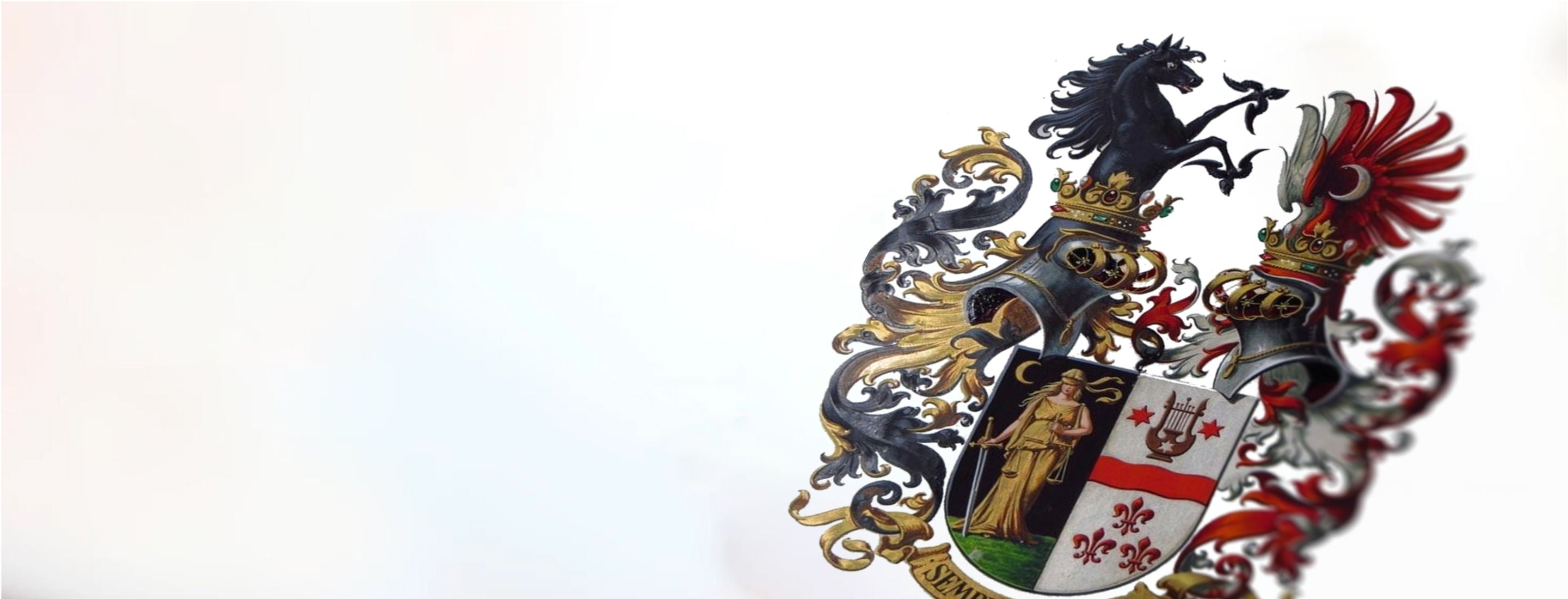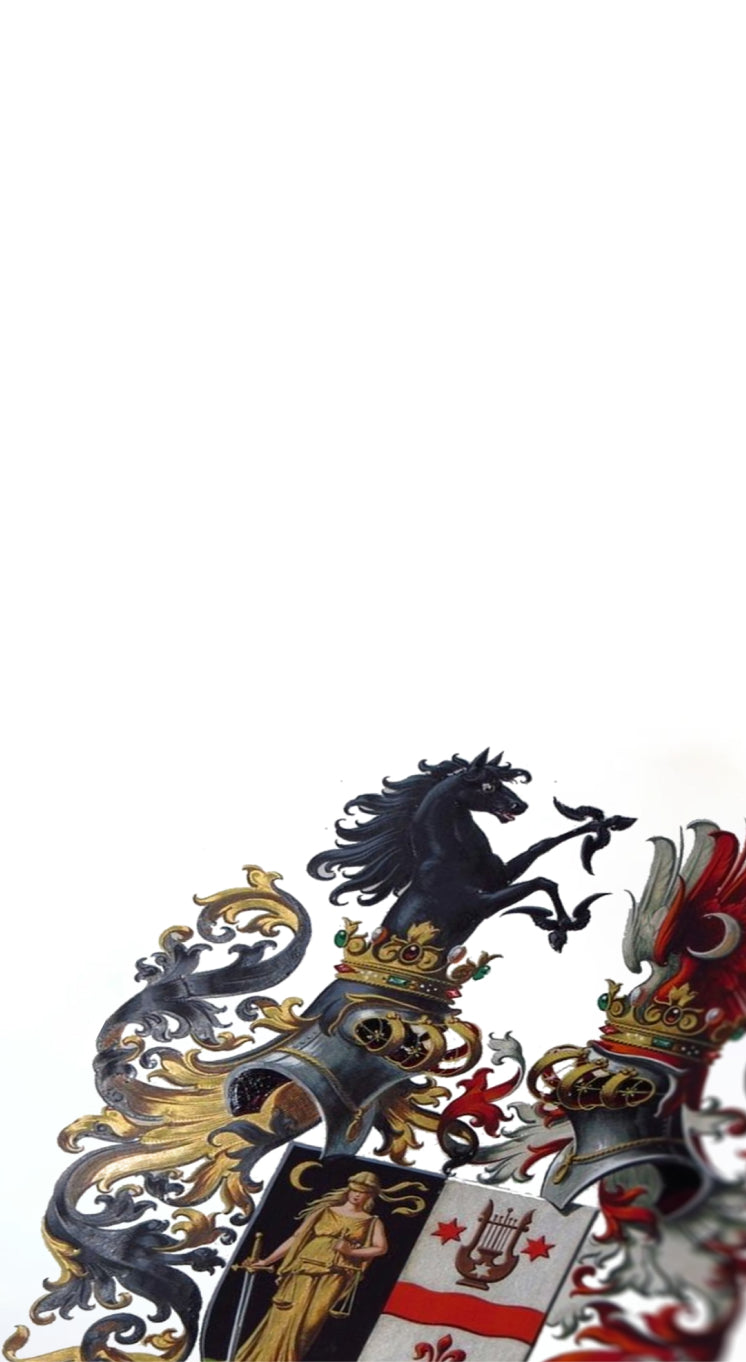
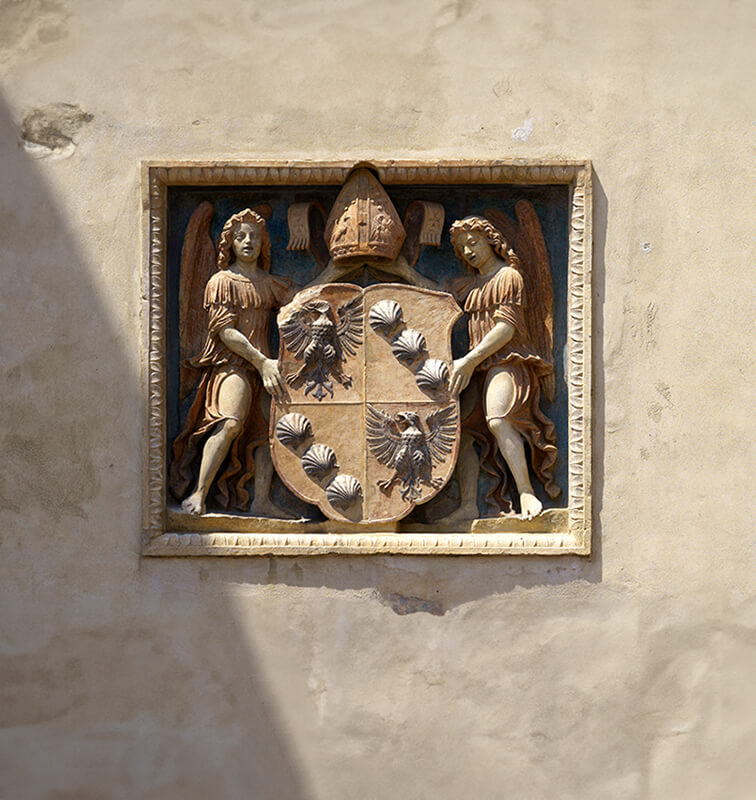
The shield forms the core of a Coat of Arms; its presence is essential for the arms' validity. Shields can appear in various shapes and styles, reflecting the artistic interpretations influenced by different historical periods and design trends. This variance might confuse those unfamiliar with heraldry, as multiple renditions of the same coat can seem distinct. Despite these stylistic changes, the fundamental elements depicted on the shield remain consistent, anchored by the heraldic traditions they represent.
The Helmet
The evolution from shield to helmet in heraldry not only highlights the art's practical origins but also its adaptability through the ages. Originally, every knight wore a helmet in battle, justifying its presence in their heraldic arms. Over time, the design and positioning of helmets in heraldry have become standardized. Notable distinctions are seen in the materials and orientations specific to different ranks: gold and facing forward for royalty; silver and in profile for peers; steel and forward for knights; and steel, closed visor, in profile for squires or gentlemen.

The Wreath
In heraldry, the wreath serves as the connection between the helmet and the crest, a crucial element in the proper depiction of a coat of arms. Traditionally made from silk with a twisted cord, the wreath secures the crest above the helmet. Modern heraldic practices dictate that the wreath be colored alternately with the principal metal and color of the shield, ensuring a seamless visual flow and strict adherence to heraldic standards. This detail reinforces the unity and integrity of the heraldic design.

The Crest
The crest, a prominent element of a coat of arms, has evolved significantly from its simple beginnings, likely crafted from materials like leather or light wood, to the elaborate designs seen today. Historically, crests may have originated from jousting tournaments, a sport where only the affluent could compete, often resulting in the victor claiming the loser's armor and horse. This practice highlighted the significance and display of crests, such as during Germany's "Helm Schau" where squires showcased their masters' helmets, enhancing the visibility and distinction of the crests.

The Mantling
The lambrequin, or mantling, is a key component of a coat of arms, appearing as decorative drapery that originates from the helmet and surrounds the shield. Its practical origins trace back to the Crusades in the Middle East, where it served as a protective covering against the intense heat, preventing the helmet from overheating and also catching opponents' sword points during combat. Typically, the colors of the mantling match the primary color and metal of the shield, integrating aesthetics with functionality in heraldic design.

The Supporters
Supporters in heraldry, often depicted as human or mythical creatures flanking the shield, serve both a decorative and symbolic purpose, originally designed to give the impression that the shield was being physically upheld. In Britain, the use of supporters is regulated, typically reserved for those of high rank such as peers and various orders of knighthood. However, in Scotland, the practice is more liberal, allowing even private gentlemen of ancient lineage to adopt supporters, reflecting a tradition deeply embedded in heraldic art and ceremony.

The Motto
The motto, a familiar part of the coat of arms, encapsulates a saying associated with a family and varies in its inclusion and placement depending on regional heraldic traditions. In England, mottos are not hereditary and are not part of the grant of arms, unlike in Scotland, where mottos are integral to the patent and fixed in placement. Irish heraldry shows even more variation, with no consistent rule regarding the inclusion of mottos in grants. Often romanticized in literature, mottos may have historical origins as war cries or represent a significant aspect of family identity, although many are later additions with no deep historical ties.

The Visitations
During the 16th and 17th centuries, it became customary in Britain for heralds to grant crests during their Visitations, extending this heraldic symbol beyond the knightly classes to include wealthy families previously without crests. This practice reflected the social aspirations of non-noble but affluent families, emblematic of broader shifts in heraldic traditions. Originally practical and lightweight for combat, crests became more ornamental in tournaments, evolving from simple leather to heavier designs for brief displays, contrasting their utilitarian use in battle across various European regions.
Shop Our Products
